Even the best protein powders can’t stand in for the “real thing” — that is, nutrient-rich whole foods that give you more than just a whole lot of protein per gram. Whether you’re focusing on muscle gain, recovery, weight loss, or just feeling better all around, it’s not all about the hypertrophy-promoting macro. You’ll want to focus on high-quality, nutrient-dense foods helps you feel full, fueled, and healthy.
For the days you’re fresh out of pre-workout and looking for the nutrient-rich treats to get the most bang for your buck, we’ve got a list of the best nutrient-dense foods you’ll want to add to your shopping list. They contain an excellent ratio of macronutrients, micronutrients, and other goodies your body needs.
Key Takeaways
- Nutrient-dense foods are those that are packed with vitamins, minerals, complex carbohydrates, lean protein, and healthy fats yet are relatively low in calories. (1)
- Nutrient density is the amount of nutrients you get for the calories consumed. (2)
- The most nutrient-dense foods include salmon, nuts, berries, and leafy greens.
- A nutrient-rich diet can help prevent chronic diseases and reduces risk factors such as heart disease, high blood pressure, diabetes, and obesity. (3)
What Is Nutrient Density?
What is nutrient-dense food, exactly? Nutrient density is the amount of nutrients you get for the calories consumed. (2)
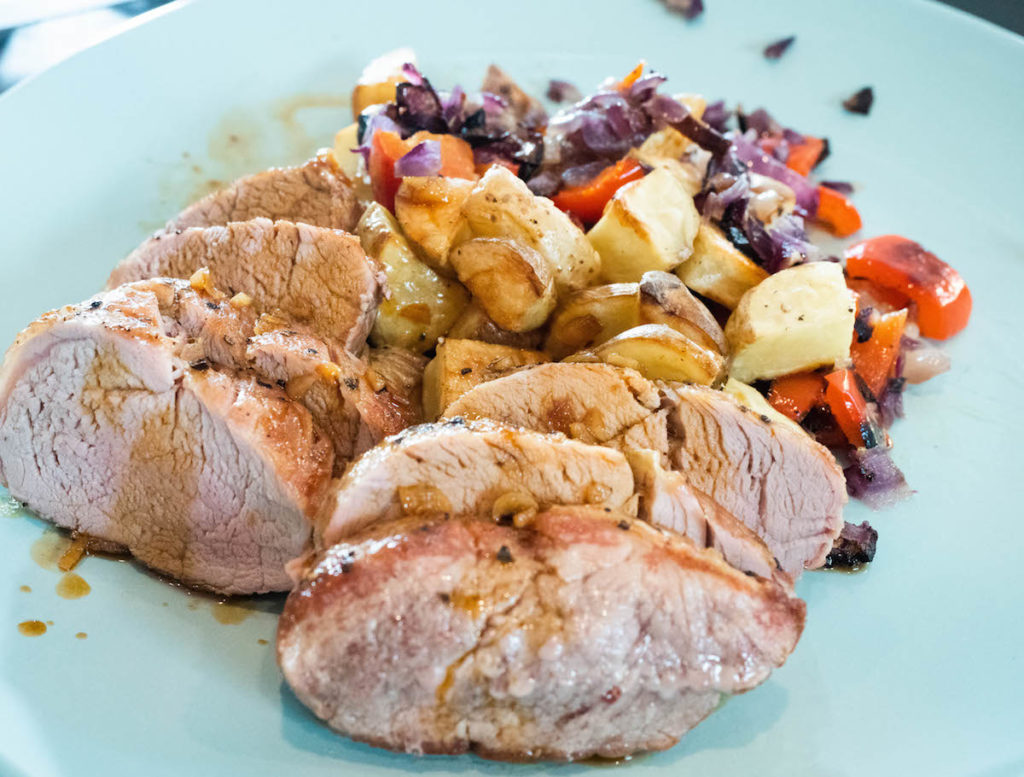
People with different goals may aim to eat more calories (building muscle) or fewer calories (weight loss). In both cases, nutrient-rich foods will give you high-quality calories that help inch you toward either goal.
Which essential nutrients make up nutrient-dense foods? Let’s look at a few categories.
- Macronutrients Vs. Micronutrients: Macronutrients (or macros) are your big three — protein, carbs, and fats. These are where calories, or energy, come from. Micronutrients are your vitamins (A, B1-12, C, D, E, and K) and minerals (calcium, potassium, magnesium, manganese, selenium, phosphorus, folate, iron, and more).
- Micronutrients for Athletes: Certain micronutrients, like sodium, magnesium, calcium, iron, selenium, zinc, vitamin D, and vitamin K, are especially crucial for athletes. (4)
- Antioxidants: You’ll see the term antioxidants a lot — antioxidants refer to any substance that helps fight oxidative stress and reduce inflammation in your body. Many of the micronutrients mentioned above, and more may qualify. (5)
Most Nutrient-Dense Foods
Here are the most nutritious foods you can eat (and why to eat them).
The nutritional value of each food comes from the FoodData Central page on the United States Department of Agriculture (USDA) website. (6)
Salmon
When it comes to high-protein foods, salmon is one of your top choices for nutrient density because it’s a high-quality source of protein and an impressive array of nutrients.

But what do we mean when we call a protein “high-quality,” anyway? According to Registered Dietitian Aimee Gershberg, RD, CDN, CPT“High-quality is often a reference to bioavailability, or our ability to absorb and utilize the nutrients of foods we eat. Minimally processed foods like chicken, meat, fish, and other types of animal proteins are foods with high percentages of protein per weight. They also contain micronutrients like iron, B-vitamins, and bioactive compounds.”
- Nutrient-Dense Content: Salmon contains omega-3 fatty acids, magnesium, potassium, and selenium, and it is high in vitamins B-12 and D. (7)
- Benefits: There are several omega-3 benefits, including better heart health, brain health, less inflammation, and muscle recovery. (8)
- Macros: Every 100 grams of wild Atlantic salmon contains about 20 grams of protein and 6 grams of healthy fats. (7)
Nuts
The most nutrient-rich types of nuts are unsalted almonds, pistachios, and walnuts. Nuts are among the best healthy snacks because they contain healthy fats that help you feel satiated. (7)
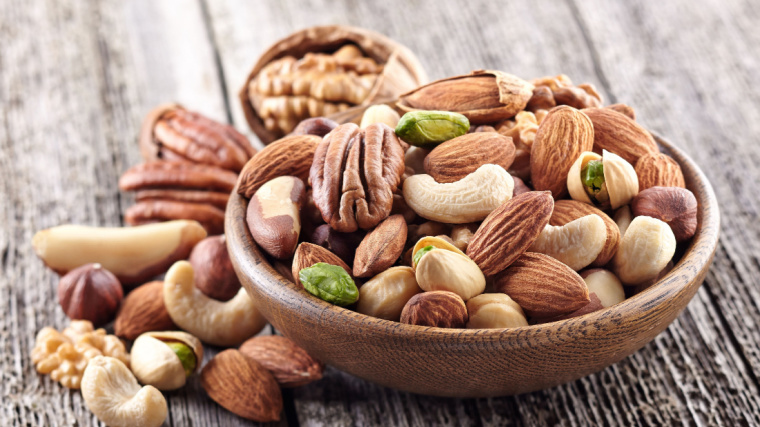
And there’s no reason to turn your nose up at the protein content. Gershberg explains: “[A] common myth about protein intake is that the best protein sources is always meat. This is not always the case. Plants can be a great source of protein.”
- Nutrient-Dense Content: Nuts contain healthy unsaturated fats, protein, fiber, and other nutrients.
- Benefits:
- Almonds are one of the best sources of calcium in the nut family. They also contain vitamin E and magnesium. (9)
- Walnuts contain L-arginine, which boosts nitric oxide and may be beneficial for heart health. (10)
- Pistachios are high in fiber and antioxidants.
- Nutrients in nuts can help reduce the risk of chronic diseases and reduce inflammation. (11)
- Macros per 28-Gram Serving:
- Almonds: 6 grams of protein, 14 grams of fat, 6.1 grams of carbs
- Pistachios: 5.7 grams of protein, 12.8 grams of fat, 7.7 grams of carbs
- Walnuts: 4.3 grams of protein, 18.5 grams of fat, 3.8 grams of carbs
Berries
Berries are nutrient-dense fruits that make a great healthy snack, smoothie ingredient, or breakfast addition. Examples include blueberries, raspberries, strawberries, and blackberries.
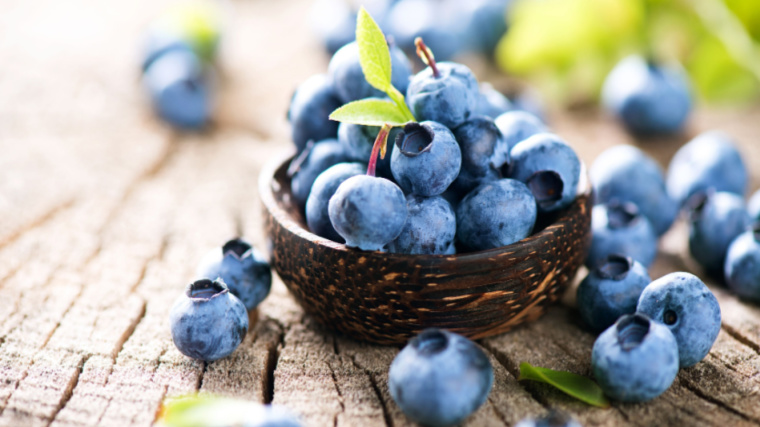
- Nutrient-Dense Content: Berries are rich in vitamins and antioxidants and are high-fiber foods. They get their rich colors from the antioxidant anthocyanin. (12)
- Benefits:
- They may help lower the risk of cardiovascular disease. (13)
- Potential health benefits of anthocyanins include protection from chronic diseases, better brain health, and less inflammation. (14)
- Athletes tend to focus on protein and carbs and may be lacking fiber. Fiber benefits include better gut health and less inflammation.
- Macros per 100-Gram Serving:
- Blueberries: 0.7 gram of protein, 0.3 gram of fat, 14.5 grams of carbs
- Raspberries: 1.01 grams of protein, 0.2 gram of fat, 13 grams of carbs
- Strawberries: 100 grams contains 0.64 gram of protein, 0.2 gram of fat, 8 grams of carbs
Eggs
Eggs are a (sometimes) inexpensive, convenient, nutrient-dense protein source.

Gershberg ranks eggs among the best sources of protein, too. She explains: “The protein digestibility-corrected amino acid score (PDCAAS) is a way to evaluate the quality of a protein. The highest ranked foods include animal sources such as eggs and cow’s milk, as well as plant sources such as soy protein!”
- Nutrient-Dense Content: Eggs are packed with phosphorus, calcium, and potassium and have a moderate sodium content. They also contain all essential trace elements such as copper, iron, magnesium, manganese, selenium, zinc, and choline. (15)
- Benefits:
- Macros: One 50-gram large egg contains 6.3 grams of protein, 4.76 grams of fat, and 0.4 gram of carbs.
Leafy Greens
You’ve got plenty of nutrient-dense leafy green vegetables to choose from: spinach, arugula, kale, Swiss chard, mustard greens, and bok choy. These can bulk up your meals to give you tons of essential nutrients.

- Nutrient-Dense Content: Leafy greens are high in fiber, iron, potassium, magnesium, and calcium while also being very low in carbohydrates, sodium, and cholesterol. (18)
- Benefits:
- Leafy greens are a source of dietary nitrates, which can boost nitric oxide and heart health. (19)
- Spinach is a good source of iron, fiber, and vitamin A.
- Kale is a source of vitamins C and K.
- Swiss chard contains magnesium and vitamins A and C.
- Iron needs for athletes may be higher to support muscle recovery.
- Macros per 100-Gram Serving:
- Spinach: 2.86 grams of protein, 0.39 gram of fat, 3.63 grams of carbs
- Kale: 2.92 grams of protein, 1.49 grams of fat, 4.42 grams of carbs
- Swiss Chard: 1.8 grams of protein, 0.2 gram of fat, 3.75 grams of carbs
Legumes
The legume family includes several types of beans (black, white, and kidney) and lentils. Lentils are a great source of plant-based protein for vegan athletes.
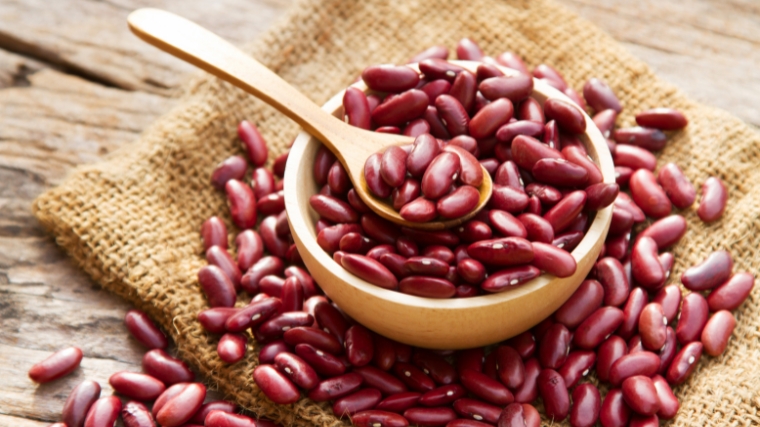
- Nutrient-Dense Content: Legumes are rich in vitamin B, antioxidants, and minerals, including iron, calcium, and magnesium. (7)
- Benefits:
- Black beans are high in fiber and magnesium.
- Lentils, a superfood, contain magnesium, potassium, phosphorus, fiber, and plant-based protein.
- Legumes can help improve cardiovascular health.
- Macros per 1-Cup Serving:
- Black Beans: 15 grams of protein, 1 gram of fat, 41 grams of carbs
- Lentils: 17.9 grams of protein, 0.8 gram of fat, 39.9 grams of carbs
Sweet Potatoes
Sweet potatoes are a great pre-workout snack and nutrient-dense addition to any meal.

- Macros: A 1-cup serving of sweet potatoes has 4.0 grams of protein, 0.3 gram of fat, and 41 grams of carbs.
- Benefits:
- They get their orange color from the antioxidant beta-carotene, which can boost eye health.
- Nutrient-Dense Content: High in complex carbohydrates and contain vitamins A, B-6, and C. (7)
Whole Grains
Nutrient-dense whole grains include quinoa, brown rice, whole-grain bread, whole-grain pasta, oats, and barley.
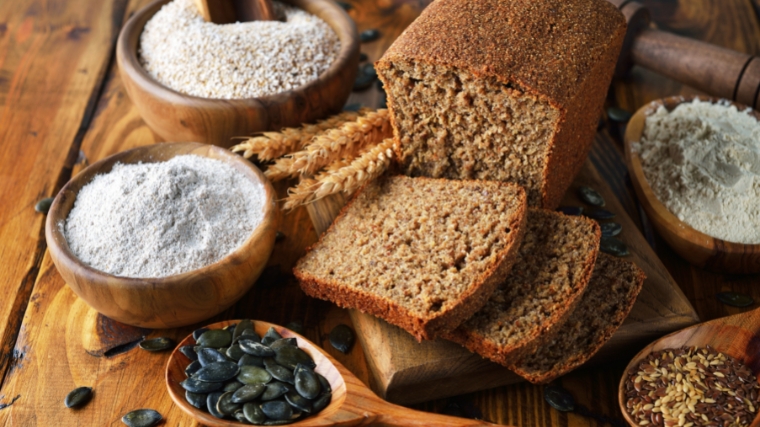
- Nutrient-Dense Content: Whole grains are complex carbohydrates.
- Quinoa contains manganese, phosphorus, magnesium, folate, and vitamin B1. (20)
- Brown rice and whole-grain bread also contain fiber and magnesium.
- Benefits:
- Their gradual release of energy keeps you fueled for longer.
- They spike your blood sugar less than simple carbohydrates like white bread or pasta (which means more sustainable energy and less crashes).
- Macros per 1-Cup Serving:
- Quinoa: 8.1 grams of protein, 3.5 grams of fat, 39.4 grams of carbs.
- Brown Rice: 5.5 grams of protein, 1.96 grams of fat, 51 grams of carbs.
- Whole-Grain Bread: One slice contains 3.9 grams of protein, 1.1 grams of fat, and 13.7 grams of carbs.
[Read More: Micronutrients for Athletes]
Cruciferous Vegetables
Cruciferous vegetables are broccoli, cabbage, cauliflower, and Brussels sprouts.

- Nutrient-Dense Content: High in vitamin C, K, B9, and fiber. (21)
- Benefits:
- Cruciferous vegetables may help protect against cancer. (22)
- Broccoli and cauliflower are high in fiber and antioxidants.
- Brussels sprouts are high in vitamins C and K.
- Macros per 1-Cup Serving:
- Broccoli: 2.57 grams of protein, 0.34 gram of fat, 6.27 grams of carbs
- Cabbage: 1.28 grams of protein, 0.1 gram of fat, 5.8 grams of carbs
- Cauliflower: 1.92 grams of protein, 0.28 gram of fat, 4.97 grams of carbs
- Brussels Sprouts: 4.0 grams of protein, 0.8 gram of fat, 11 grams of carbs
Garlic
Cooking with garlic has more health benefits than just its flavor (which, I have to say, is on point).

- Nutrient-Dense Content: It contains vitamins C, B1, and B6, calcium, potassium, copper, manganese, and selenium. (23)
- Benefits:
Why Is it Important to Have a Nutrient Dense Diet?
Whole foods provide us with essential vitamins and minerals that may help prevent chronic diseases. (3)

- Heart Health: Nutrient-dense foods contain important compounds that can help lower cardiovascular disease risk factors, such as high blood pressure, blood sugar, and cholesterol levels.
- Cost-Efficient: Packing your diet with nutrient-dense foods is how to eat healthy on a budget. Sure, some foods like sustainably caught salmon can be pricier, but you’ll feel fuller and more nourished, and get more bang for your buck.
- Weight Loss: Nutrient-dense (and high-density) foods are your go-to if you’re reducing your caloric intake. Why? They help you feel full while sticking to your meal plan.
- Building Muscle: Look for high-quality, complete protein sources that contain all the essential amino acids your body needs to build muscle.
- Muscle Recovery: What aspects of nutrient timing matter most? It’s up for debate — but it’s pretty much unanimously agreed that protein and carbs help repair muscle and refill glycogen stores. Nutrient-dense foods will get you both.
How to Add Nutrient-Dense Foods Into Your Diet
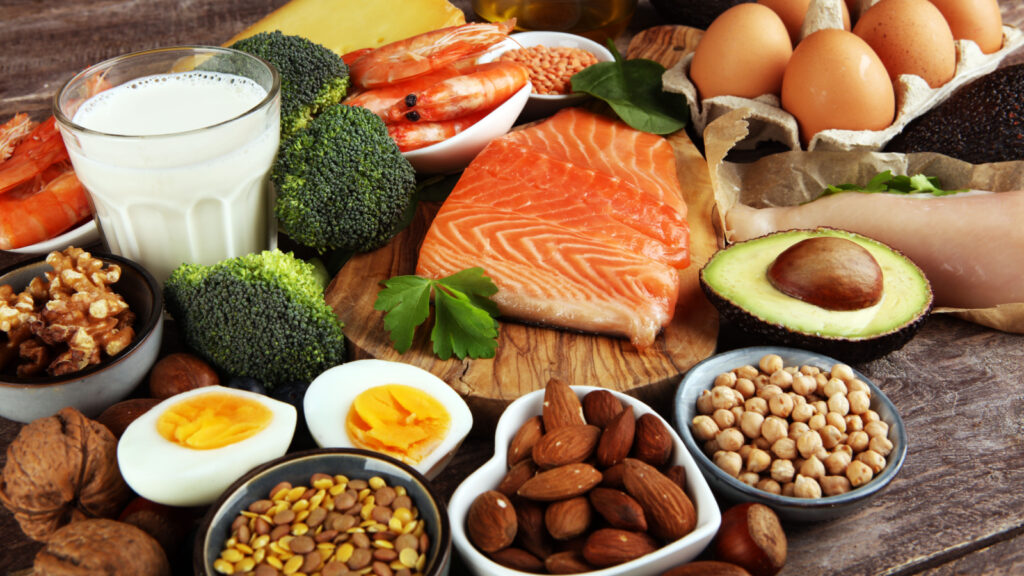
- Half of your plate should contain vegetables and some fruits when you are having a meal. (26)
- Swap white bread, rice, and pasta for whole-grain pasta, whole-wheat bread and brown rice. (2)
- Make nutrient-dense smoothies with berries and leafy greens.
- Start small by adding one nutrient-dense food to every meal.
- Have at least one nutrient-dense meal per day — example: salmon, quinoa, and Brussels sprouts.
- If you’re a meal prepper, make a big batch of one nutrient-dense food (like sweet potatoes) to add to your meals throughout the week.
Most Nutrient-Dense Foods FAQs
What is nutrient density?
Nutrient density is the amount of nutrients you get per calorie. A common calculation is to divide the amount of key nutrients by 100 calories. Sometimes it is calculated by dividing the nutrients by 100 grams. The calorie method is thought to be more accurate — the more that the nutrients outweight the calories, the higher the density is. (27)
Which fruits and vegetables are highest in nutrient density?
For fruits, the winners are berries and citrus fruits. In the vegetable department, leafy greens and cruciferous vegetables take the nutrient cake.
Which foods offer the highest nutrient density per calorie?
Salmon, nuts, eggs, berries, leafy greens, legumes, sweet potatoes, whole grains, cruciferous vegetables, and garlic are the most nutrient-dense foods out there.
References
- National Institutes of Health. Definition of nutrient-dense food. National Cancer Institute. https://www.cancer.gov/publications/dictionaries/cancer-terms/def/nutrient-dense-food
- American Heart Association. How Can I Eat More Nutrient Dense Foods? Heart.org. https://ift.tt/X2ONdPh
- Axe, J. (2021, September 26). Top Nutrient-Dense Foods and Their Benefits. Dr. Axe. https://draxe.com/nutrition/nutrient-dense-foods/
- Beck KL, von Hurst PR, O’Brien WJ, Badenhorst CE. Micronutrients and athletic performance: A review. Food Chem Toxicol. 2021 Dec;158:112618. doi: 10.1016/j.fct.2021.112618. Epub 2021 Oct 15. PMID: 34662692.
- National Center for Complementary and Integrative Health. Antioxidants: In Depth. October 2013.
- USDA. FoodData Central. U.S. Department of Agriculture. https://fdc.nal.usda.gov/fdc-app.html#/
- Nutrient-dense food list. Medical News Today. https://www.medicalnewstoday.com/articles/324713
- Gammone MA, Riccioni G, Parrinello G, D’Orazio N. Omega-3 Polyunsaturated Fatty Acids: Benefits and Endpoints in Sport. Nutrients. 2018 Dec 27;11(1):46. doi: 10.3390/nu11010046. PMID: 30591639; PMCID: PMC6357022.
- Harvard Medical School (2024, February 4). Quick-start guide to nuts and seeds. Harvard Health Publishing. https://www.health.harvard.edu/nutrition/quick-start-guide-to-nuts-and-seeds
- Ros E. Nuts and novel biomarkers of cardiovascular disease. Am J Clin Nutr. 2009 May;89(5):1649S-56S. doi: 10.3945/ajcn.2009.26736R. Epub 2009 Mar 25. PMID: 19321561.
- Gonçalves B, Pinto T, Aires A, Morais MC, Bacelar E, Anjos R, Ferreira-Cardoso J, Oliveira I, Vilela A, Cosme F. Composition of Nuts and Their Potential Health Benefits-An Overview. Foods. 2023 Feb 23;12(5):942. doi: 10.3390/foods12050942. PMID: 36900459; PMCID: PMC10000569.
- Mattioli R, Francioso A, Mosca L, Silva P. Anthocyanins: A Comprehensive Review of Their Chemical Properties and Health Effects on Cardiovascular and Neurodegenerative Diseases. Molecules. 2020 Aug 21;25(17):3809. doi: 10.3390/molecules25173809. PMID: 32825684; PMCID: PMC7504512.
- Basu A, Rhone M, Lyons TJ. Berries: emerging impact on cardiovascular health. Nutr Rev. 2010 Mar;68(3):168-77. doi: 10.1111/j.1753-4887.2010.00273.x. PMID: 20384847; PMCID: PMC3068482.
- Mattioli R, Francioso A, Mosca L, Silva P. Anthocyanins: A Comprehensive Review of Their Chemical Properties and Health Effects on Cardiovascular and Neurodegenerative Diseases. Molecules. 2020 Aug 21;25(17):3809. doi: 10.3390/molecules25173809. PMID: 32825684; PMCID: PMC7504512.
- Réhault-Godbert S, Guyot N, Nys Y. The Golden Egg: Nutritional Value, Bioactivities, and Emerging Benefits for Human Health. Nutrients. 2019 Mar 22;11(3):684. doi: 10.3390/nu11030684. PMID: 30909449; PMCID: PMC6470839.
- Mahabadi N, Bhusal A, Banks SW. Riboflavin Deficiency. 2023 Jul 17. In: StatPearls [Internet]. Treasure Island (FL): StatPearls Publishing; 2024 Jan–. PMID: 29262062.
- Handelman GJ, Nightingale ZD, Lichtenstein AH, Schaefer EJ, Blumberg JB. Lutein and zeaxanthin concentrations in plasma after dietary supplementation with egg yolk. Am J Clin Nutr. 1999 Aug;70(2):247-51. doi: 10.1093/ajcn.70.2.247. PMID: 10426702.
- Leafy Greens, The Superfood. Western Missouri Medical Center. https://wmmc.com/leaf-greens-the-superfood/
- Brkić D, Bošnir J, Bevardi M, Bošković AG, Miloš S, Lasić D, Krivohlavek A, Racz A, Ćuić AM, Trstenjak NU. NITRATE IN LEAFY GREEN VEGETABLES AND ESTIMATED INTAKE. Afr J Tradit Complement Altern Med. 2017 Mar 1;14(3):31-41. doi: 10.21010/ajtcam.v14i3.4. PMID: 28480414; PMCID: PMC5412236.
- Quinoa. Harvard T.H. Chan School of Public Health. https://ift.tt/5Ssz3lu
- (2023, June 7). What Are Cruciferous Vegetables — And Why Are They So Good for You? Cleveland Clinic. https://health.clevelandclinic.org/crunchy-and-cruciferous-youll-love-this-special-family-of-veggies
- National Institutes of Health (n.d.). Definition of cruciferous vegetable. National Cancer Institute. https://ift.tt/VWTANwu
- U.S. Department of Agriculture. Garlic, raw. FoodData Central. https://fdc.nal.usda.gov/fdc-app.html#/food-details/1104647/nutrients
- Baik JS, Min JH, Ju SM, Ahn JH, Ko SH, Chon HS, Kim MS, Shin YI. Effects of Fermented Garlic Extract Containing Nitric Oxide Metabolites on Blood Flow in Healthy Participants: A Randomized Controlled Trial. Nutrients. 2022 Dec 8;14(24):5238. doi: 10.3390/nu14245238. PMID: 36558397; PMCID: PMC9781726.
- Ansary J, Forbes-Hernández TY, Gil E, Cianciosi D, Zhang J, Elexpuru-Zabaleta M, Simal-Gandara J, Giampieri F, Battino M. Potential Health Benefit of Garlic Based on Human Intervention Studies: A Brief Overview. Antioxidants (Basel). 2020 Jul 15;9(7):619. doi: 10.3390/antiox9070619. PMID: 32679751; PMCID: PMC7402177.
- Rodriguez, M., RDN, LDN. Transforming Nutrient-Dense Foods Into Exceptional Meals. Mount Sinai Medical Center. https://www.msmc.com/transforming-nutrient-dense-foods-into-exceptional-meals/
- Drewnowski A, Dwyer J, King JC, Weaver CM. A proposed nutrient density score that includes food groups and nutrients to better align with dietary guidance. Nutr Rev. 2019 Jun 1;77(6):404-416. doi: 10.1093/nutrit/nuz002. PMID: 31222368; PMCID: PMC6489166.
The post These Are the Most Nutrient-Dense Foods, According to a Nutrition Coach appeared first on BarBend.
from BarBend https://ift.tt/iCjuMGo
via IFTTT
Comments
Post a Comment